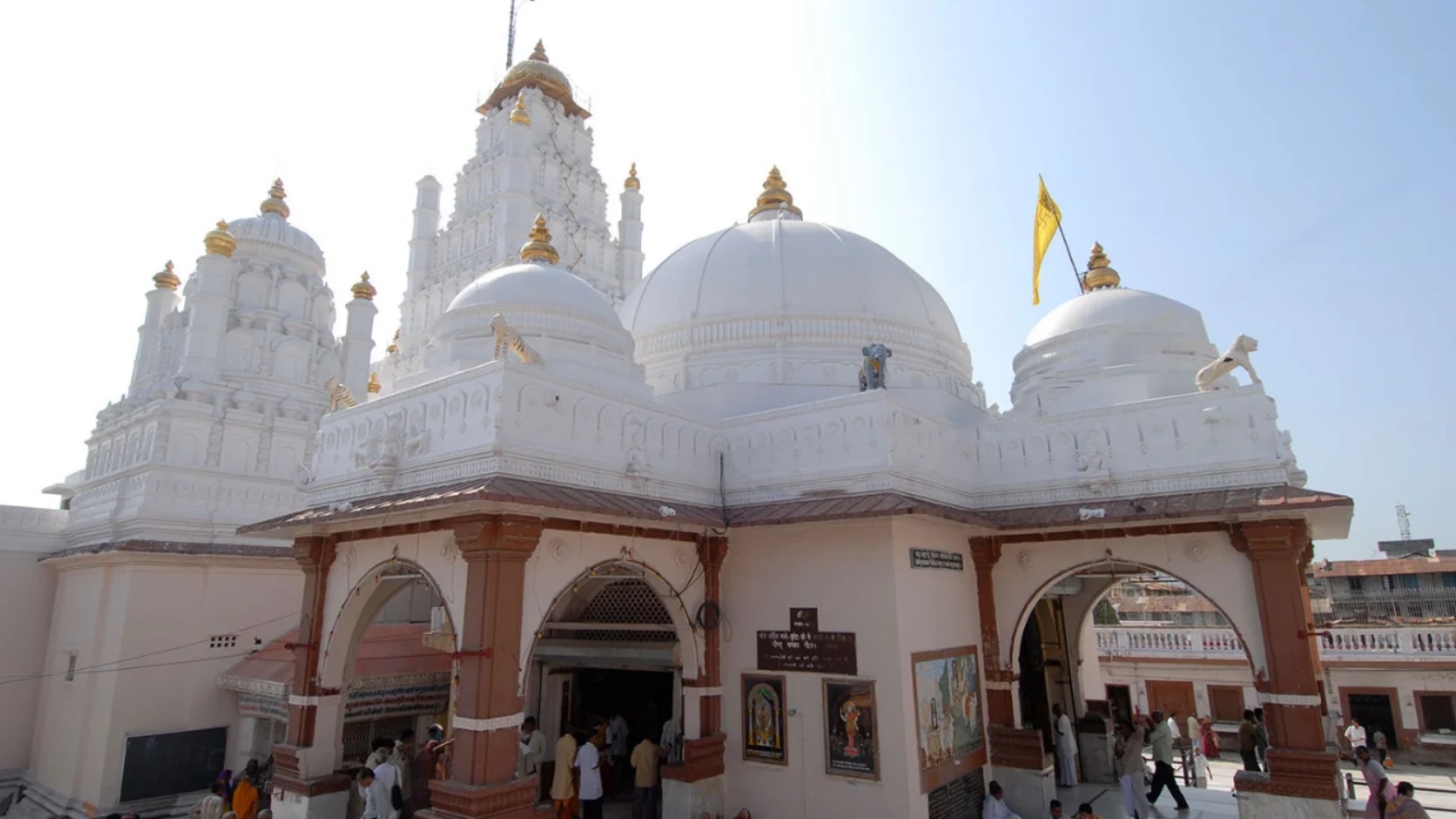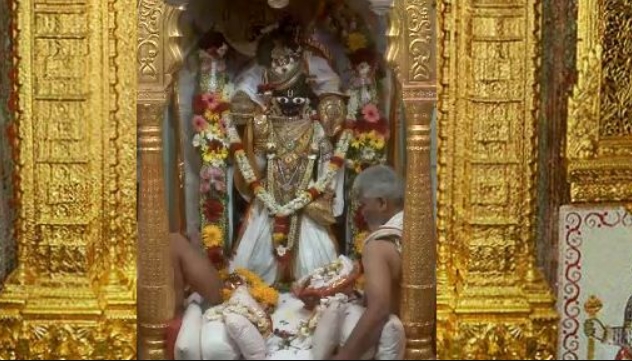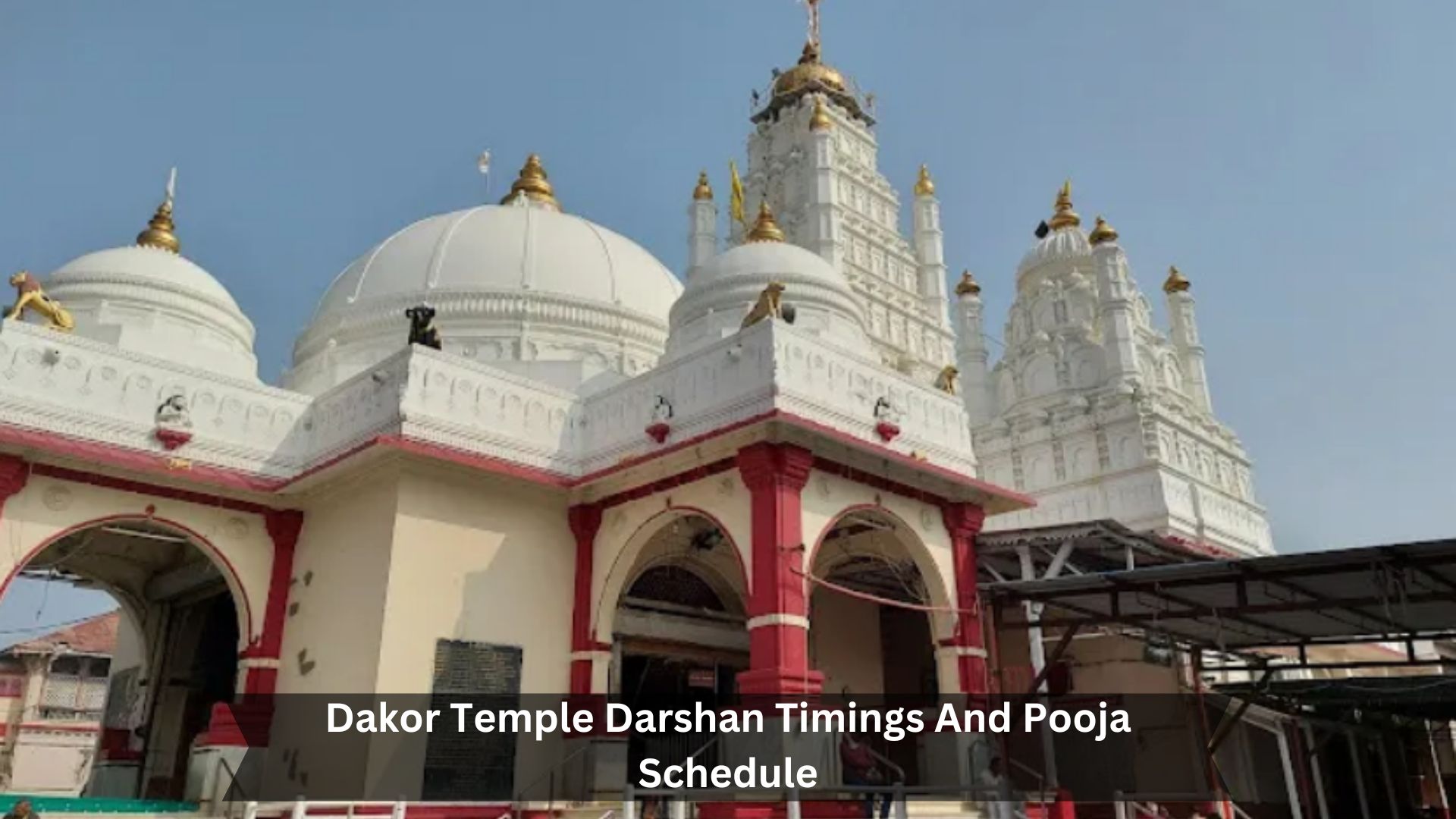The Ranchhodraiji Temple, located in Dakor, Kheda district, is significant for those who follow Lord Krishna, particularly in his Ranchhodrai form. Known as the Dakor Temple, it attracts visitors from across the country who come to seek blessings.
The temple has long history makes it an essential spot for spirituality and culture. People visiting the temple feel a robust, calming, uplifting spiritual vibe. The simple yet beautiful architecture of the temple also plays a significant role in making it an essential place for worship.
| Category | Details |
|---|---|
| Location | Dakor, Gujarat, India |
| Dedicated to | Lord Krishna (Ranchhodraiji) |
| Nearest Railway Station | Dakor Railway Station (2 km) |
| Nearest Airport | Vadodara Airport (90 km) |
| Distance from Ahmedabad | 90 km |
| Temple Timings | 6:00 AM – 12:00 PM, 4:00 PM – 7:00 PM |
| Best Time to Visit | During festivals like Janmashtami, Holi |
| Main Attraction | Idol of Lord Krishna and the grand aarti |
| Special Days | Full moon days are considered highly auspicious |
| Nearby Attractions | Gomti Lake, Ranchhodraiji Temple Museum |
Daily Darshan and Aarti Timing at Dakor Temple
Gujarati and Hindi schedules

Dakor Temple has set up its daily Darshan and Aarti times with Gujarati and Hindi speakers in mind. This ensures everyone can have a smooth and meaningful visit. The temple is open for morning darshan from 6:45AM to 12:00 PM and evening darshan from 4:00 PM to 7:30 PM. These times work well with the daily schedules of both locals and visitors, creating a friendly and inclusive atmosphere.
Announcements and instructions are given in Gujarati and Hindi, making it easier for everyone to connect with and understand the spiritual teachings. This attention to language helps keep the temple’s atmosphere sacred and ensures that the spiritual messages touch everyone in the crowd.
| Session | Darshan Type | Open Time | Close Time |
|---|---|---|---|
| Morning Darshan | Mangla Aarati Darshan | 6:45 AM | 8:30 AM |
| Temple Closed | 8:30 AM | 9:00 AM | |
| Balbhog, Shrungarbhog, Gvalbhog | 9:00 AM | 10:30 AM | |
| Temple Closed | 10:30 AM | 11:30 AM | |
| Rajbhog Aarati Darshan | 11:30 AM | 12:00 PM | |
| Afternoon Closure | Temple Closed | 12:00 PM | 4:00 PM |
| Evening Darshan | Utthapan Aarati Darshan | 4:15 PM | 5:00 PM |
| Temple Closed | 5:00 PM | 5:20 PM | |
| Shaynbhog Aarati Darshan | 5:20 PM | 6:00 PM | |
| Temple Closed | 6:00 PM | 6:45 PM | |
| Sakhdibhog Darshan | 6:45 PM | 7:30 PM |
Mangala Aarti
Mangala Aarti at Dakor Temple starts sharp at 6:45 AM. It kicks off the day’s worship and welcomes everyone to join in. This morning service is a vital part of the temple’s spiritual life. It offers a calm setting for people to begin their day focused on devotion.
You can hear bells ringing and chants filling the air during Mangala Aarti. The priests carry out age-old rites to wake up and honor Lord Ranchhodrai. People crowd into the temple’s heart to see this sacred ceremony. It’s seen as very lucky and is thought to bring peace and spiritual goodness to those who come. This ritual really sets the mood for all the temple’s activities for the day.
Also See – Madurai Meenakshi Amman Temple: Timings, History, And Travel Guide
Balbhog, Shrungarbhog, and Gwalbhog Darshan
After the early morning Mangala Aarti at Dakor Temple, devotees can engage deeply with the spiritual practices of Balbhog, Shrungarbhog, and Gwalbhog Darshan. These are vital parts of the daily worship. Each darshan involves unique offerings to Lord Ranchhodrai throughout the day.
Starting with Balbhog, right after the morning Aarti, devotees offer exceptional food to the deity. This represents feeding the deity, much like a parent feeds a child. Next comes Shrungarbhog. This involves dressing the deity in beautiful clothes and jewelry, showing deep respect and love. It’s like preparing someone special for an important day.
Lastly, there’s Gwalbhog, offered before noon. This includes dairy products, linking to Krishna’s care from his foster parents. These rituals aren’t just routines; they strengthen the spiritual bond, filling the day with respect and divine presence.
Pooja Offerings at Dakor Temple

Dhaja Puja
Why is the Dhaja Puja so important at the Dakor Temple?
Well, it’s all about giving a flag, called a Dhaja, to Lord Ranchhodrai. This flag isn’t just any flag—it’s a symbol of giving yourself over to the deity, sort of like saying, ‘I trust you with everything.’ It’s like your hopes and prayers are rising to the sky. People take this ceremony very seriously because they believe it brings them protection and blessings from above.
Also, when everyone gathers to offer this flag, it shows their strong belief and brings them closer as a community. It’s a way for them to show they belong together, united by their faith in Lord Ranchhodrai. Every year, many pilgrims come to Dakor Temple just to be part of this powerful tradition. It’s really something special.
Tulsi Puja
Tulsi Puja is a crucial spiritual practice at Shree Ranchhodraiji Temple in Dakor. Devotees worship the Tulsi plant, sacred in Hinduism and symbolizes purity and devotion to Lord Krishna.
At the temple, you can participate in this puja daily or monthly, depending on your schedule and spiritual needs. The cost for one day is 349.00, and a whole month is 12899.00. This ritual helps maintain the temple and allows you to show respect and pray for health and prosperity.
History of Dakor Temple
The Dakor Temple is a historic place, deeply rooted in tradition, and it’s a key spot for various Pooja offerings to Lord Ranchhodrai. Located in the Kheda district of Gujarat, this temple has become an important pilgrimage site. It started as a simple building but was beautifully rebuilt in 1772 by Gopalrao Jagannath Tambwekar, thanks to the help of many devotees. There’s a story that the idol of Lord Ranchhodrai was moved here from Dwarka by a devoted follower named Bodana. That event put Dakor on the map as a sacred place.
Regarding spiritual activities, the temple comes to life during special events like the Dhaja Puja and Tulsi Puja. These ceremonies draw crowds who want to soak in the holy atmosphere and join in these age-old rituals.
Conclusion
In conclusion, knowing the schedule for darshan and pooja at Shree Ranchhodraiji Temple Dakor helps visitors plan their trips better. The temple sets specific times for morning and evening darshan and organizes various pujas, such as Dhaja Puja and Tulsi Puja.
Following the dress code and other temple rules is essential to keep the sacred atmosphere respectful. There are places to stay nearby, making it easier for pilgrims to visit comfortably.

Deepak Sharma is a passionate writer and avid traveler who specializes in uncovering the beauty and history of India’s attractions and temples. A graduate of Delhi University, Deepak has a deep-rooted love for his country and its rich cultural heritage.
